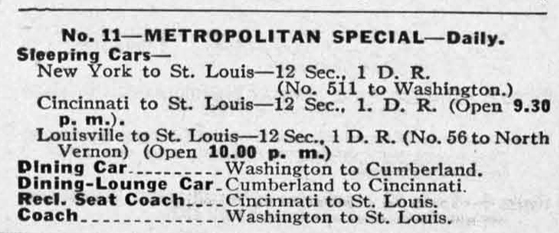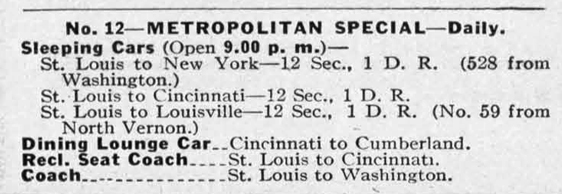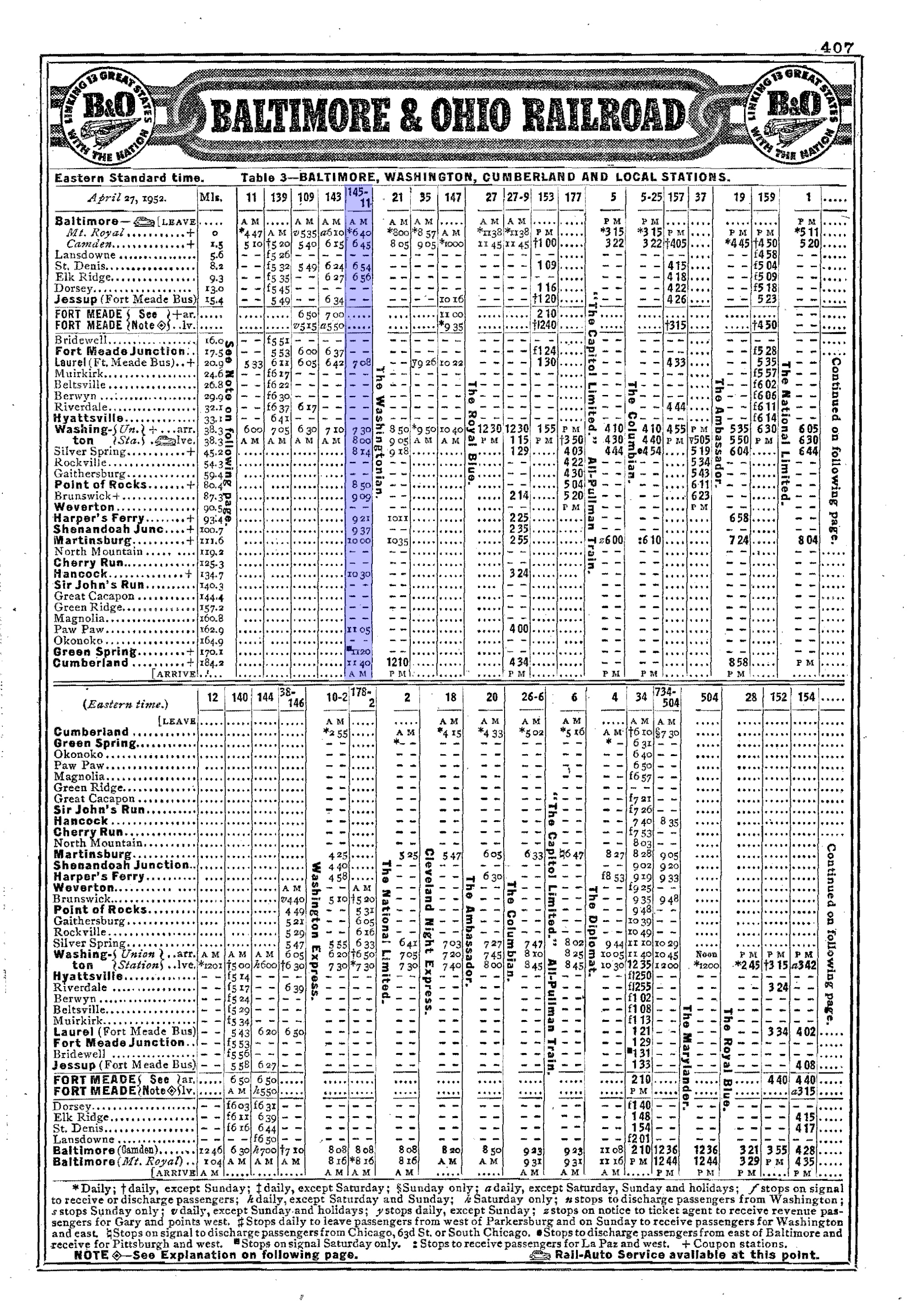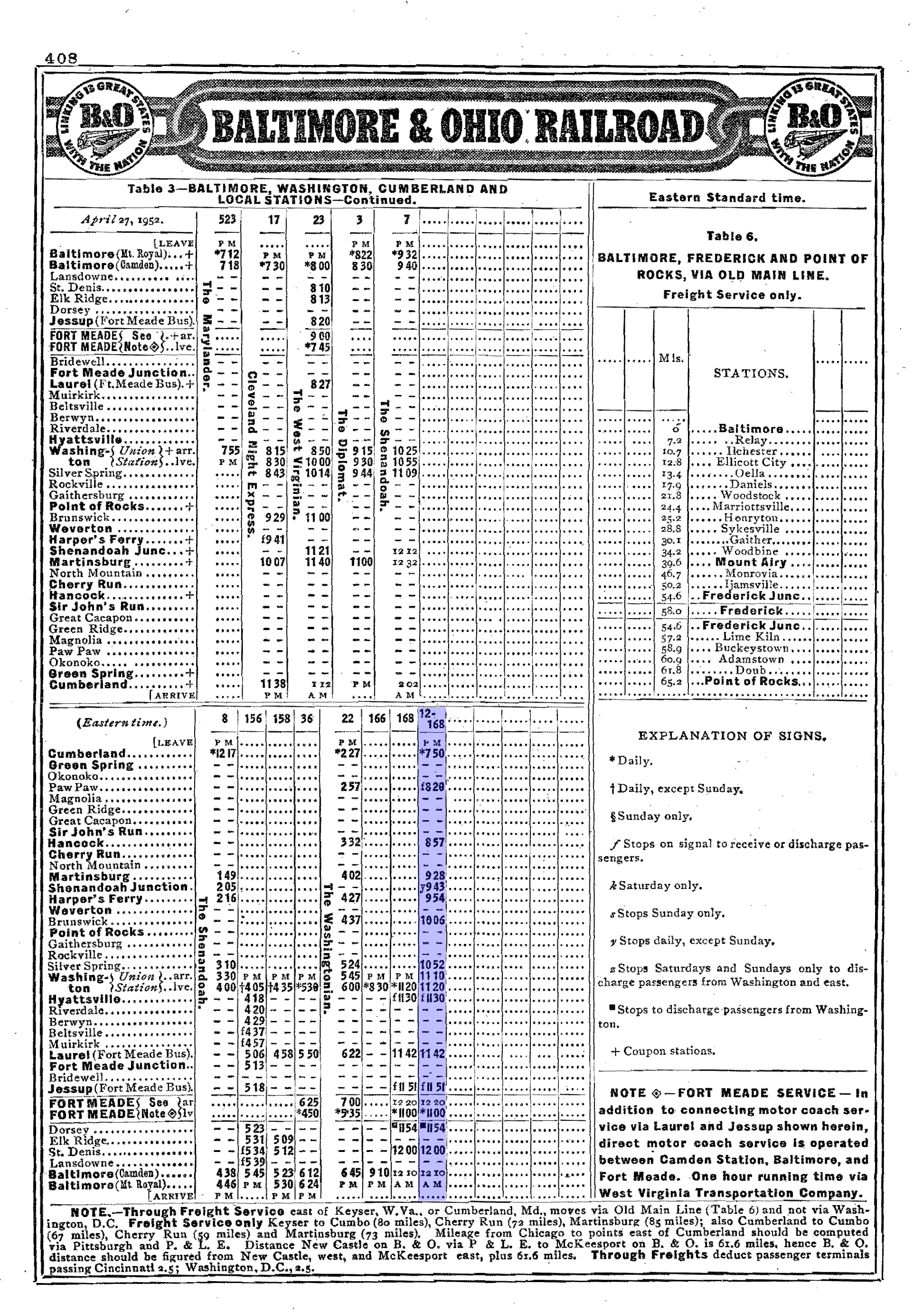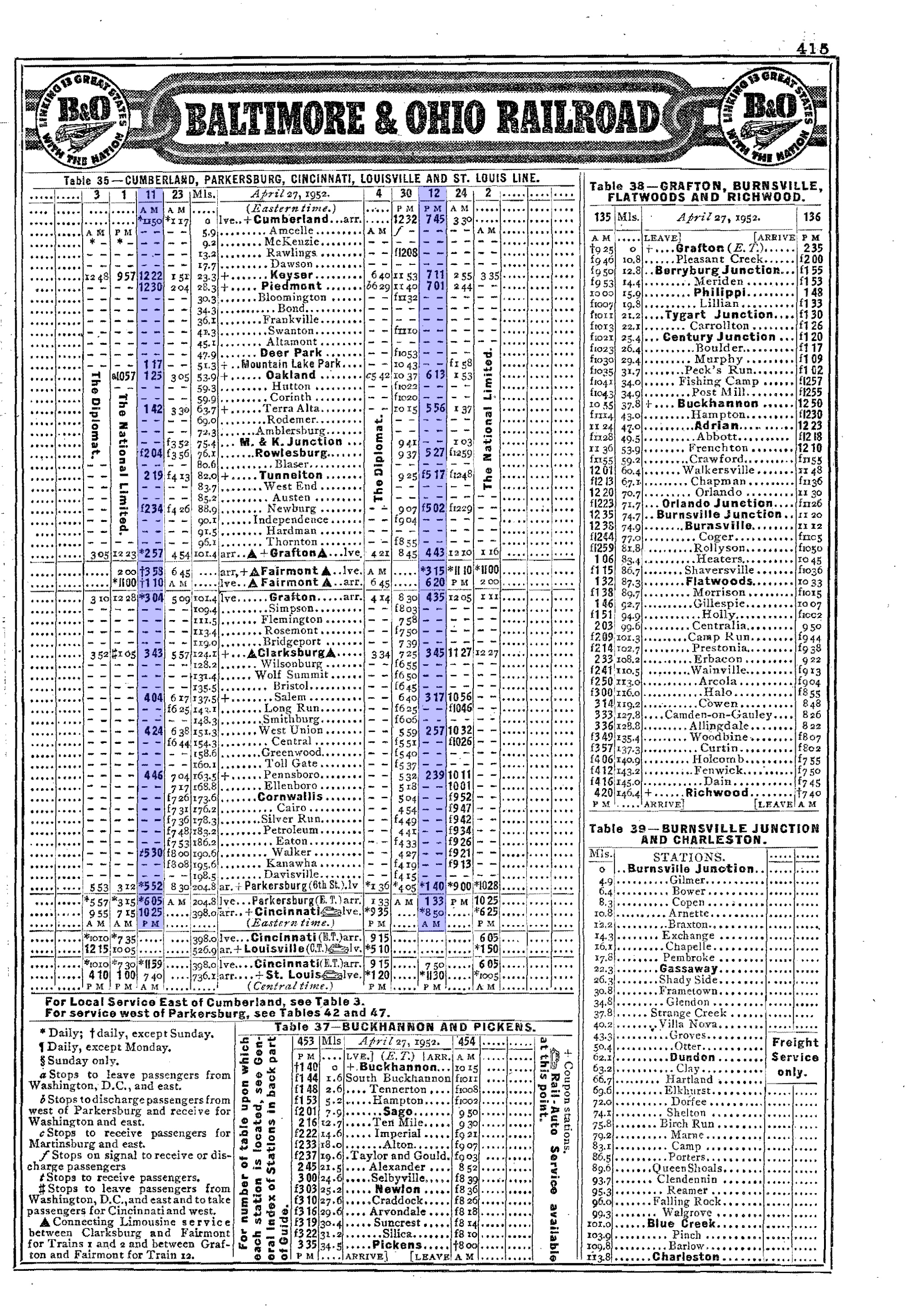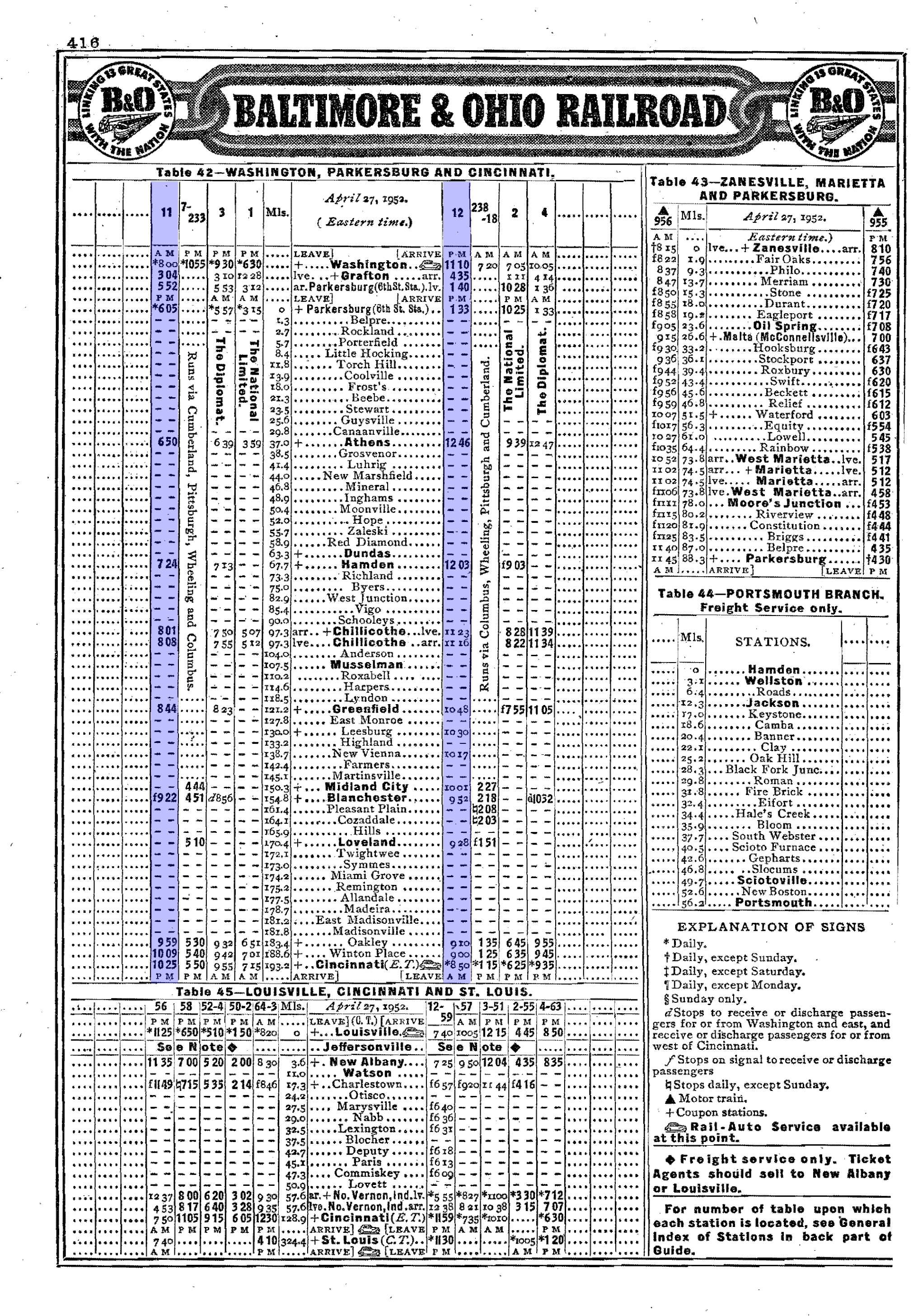B&O's "Metropolitan Special": Consist, Timetable, Route
Last revised: September 15, 2024
By: Adam Burns
Baltimore & Ohio's Metropolitan Special was one of its notable secondary trains that not only provided a less expensive alternative to the flagship National Limited but also offered additional, intermediate stops.
The original Special was established during the early 1920s but it wasn't until the following decade the train began operating as a through service in both directions. This train was never streamlined but, as always, included B&O's legendary customer service.
Its "peak years" occurred during the 1950's when it occasionally ran with lightweight equipment handed down from flagships National Limited and Capitol Limited.
Ironically, the Metropolitan outlived its more prominent counterparts and survived until the start of Amtrak in 1971.
If you were lucky enough to witness B&O's St. Louis main line in service - particularly the fabled Parkersburg Branch and Ohio Division - you could catch this train stopped at rural West Virginia towns like Salem, Pennsboro, and West Union. The train also made numerous stops throughout southeastern Ohio such as Athens, Chillicothe, Greenfield, and Midland City.
Photos
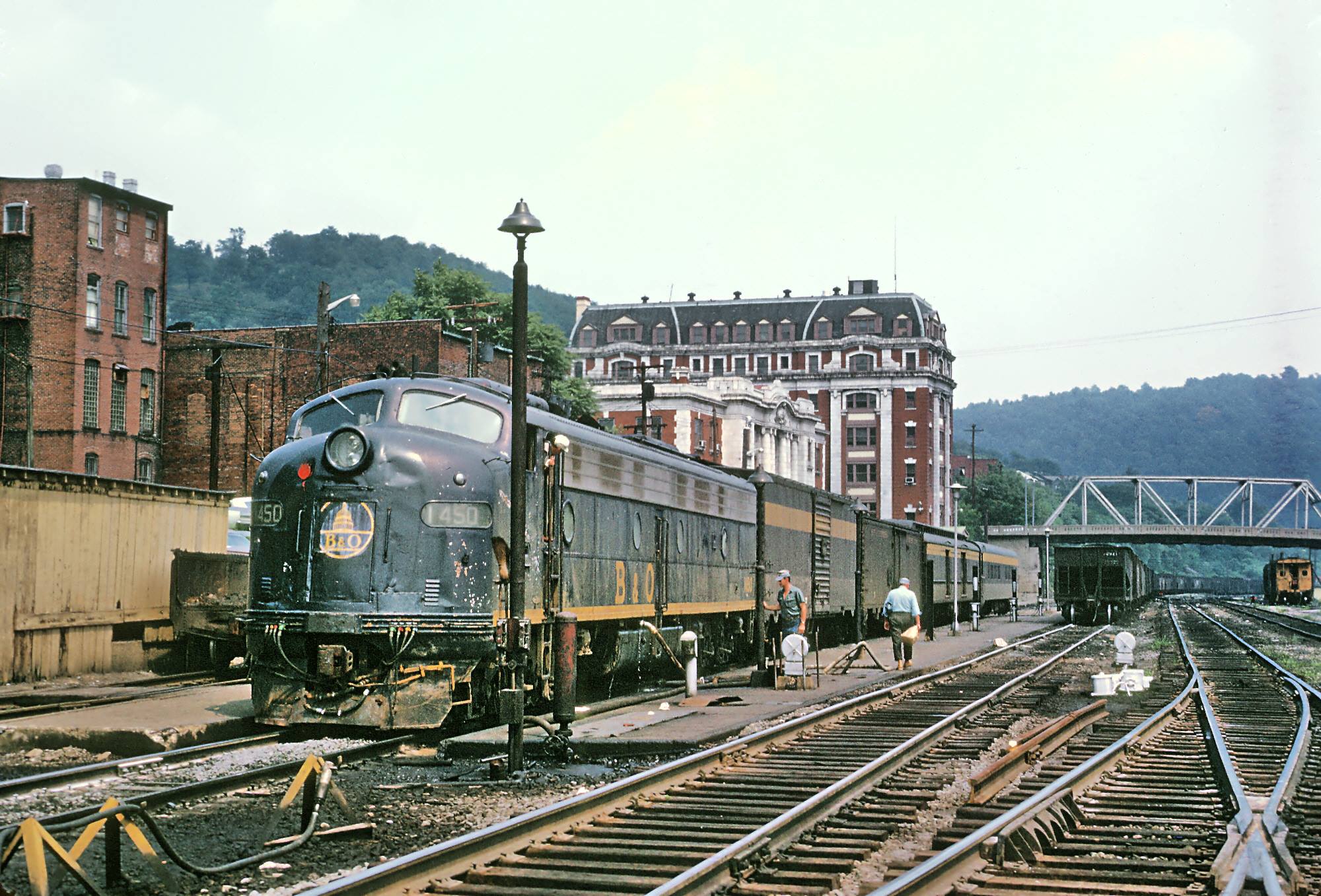 Baltimore & Ohio's train #11, the westbound "Metropolitan" (Washington, D.C. - Cincinnati) led by a tired E8A, boards at Grafton, West Virginia on July 25, 1970. Roger Puta photo.
Baltimore & Ohio's train #11, the westbound "Metropolitan" (Washington, D.C. - Cincinnati) led by a tired E8A, boards at Grafton, West Virginia on July 25, 1970. Roger Puta photo.Route and History
Baltimore & Ohio's first train operating as the Metropolitan Special began as early as the end of World War I when its eastbound train #12, the former New York-Cincinnati-St. Louis Express was renamed. Curiously, however, the railroad did not rename the westbound run, train #11, until 1937.
During that decade the B&O focused on streamlining its top trains - notably the Capitol Limited (New York-Chicago), National Limited (New York-St. Louis), and Abraham Lincoln (Chicago-St. Louis) - in an effort to stem slumping passenger traffic from the ongoing economic downturn.
The National already had a secondary train, the Diplomat, which handled its overflow traffic. The Metropolitan Special was the third-tier run on the St. Louis route and sometimes, according to Craig Sanders' book, "Limited, Locals, And Expresses In Indiana, 1838-1971," the train didn't always carry all-matching equipment in the B&O's handsome blue and grey livery.
The Special was a daylight run between Washington, D.C. and Cincinnati (giving passengers wonderful views of the Allegheny Mountains in the east) and then ran overnight from Cincinnati to St. Louis.
While the train ran a slower schedule its numerous intermediate stops, available sleepers/Pullman service, and cheaper ticket prices made it attractive to a wide range of travelers.
In fact, as Joe Welsh notes in his book, "Baltimore & Ohio's Capitol Limited and National Limited," the Special's considerable head-end business following the demise of B&O's dedicated mail/express runs made it the most profitable train on the system.
Consist (1948)
A typical consist for the Metropolitan Special during its early years included coaches, a diner (east of Cincinnati), and one or more Pullman sleepers depending on the need and availability.
While passengers enjoyed the train for their own reasons (unparalleled service, flexible scheduling, etc.) the B&O was happy with its profitability, thanks in part to the train's considerable mail-and-express traffic.
Consist (1952)
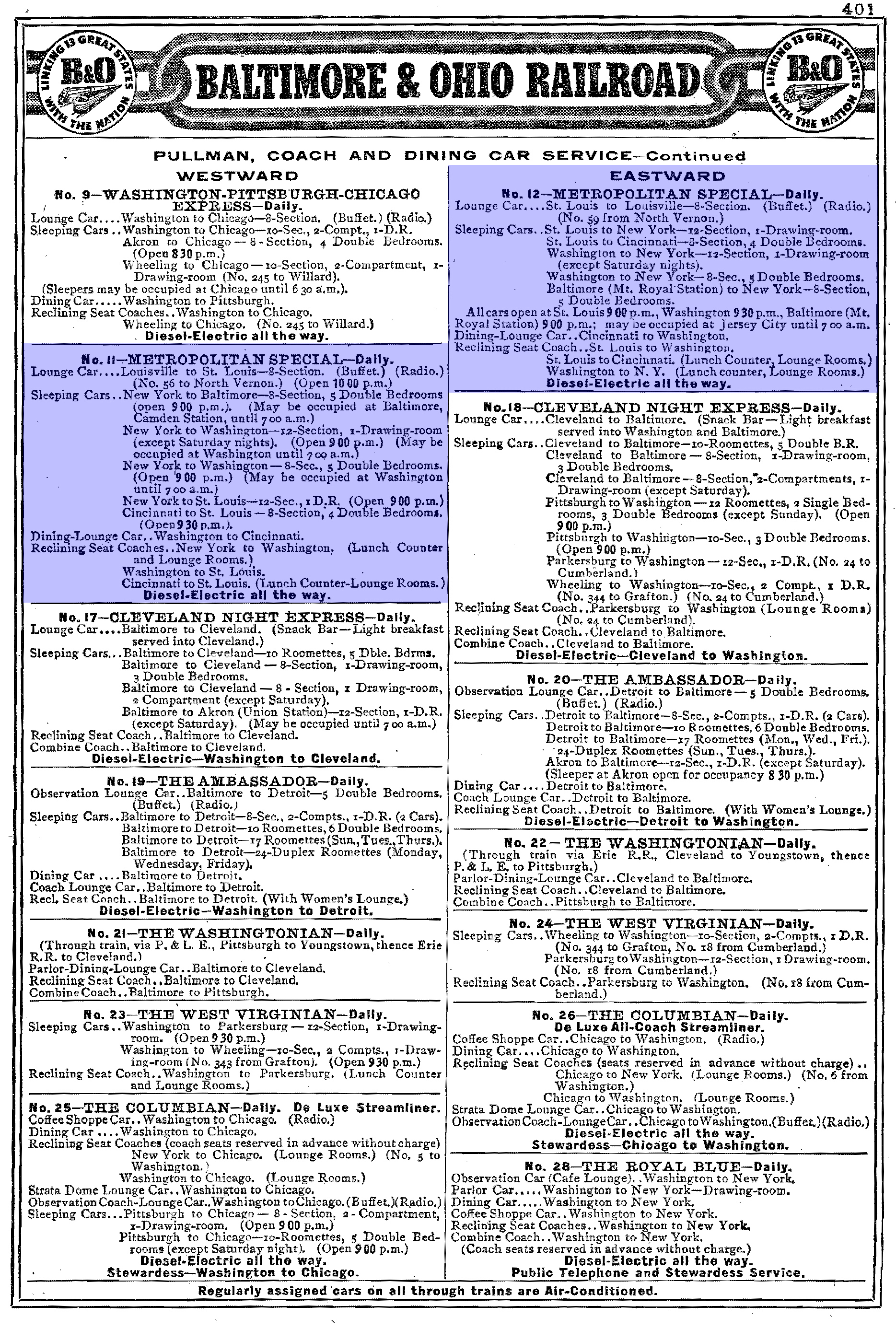
The Metropolitan was steam-powered until 1950 often pulled by one of the B&O's classic and handsome 4-6-2 Pacifics. After that time it utilized Electro-Motive E7As and E8As/Bs which gave the train a much more streamlined appearance even though it was not.
A year later in 1951 the B&O extended the Special to New York when it ended unnamed trains #511/528. After July of 1949 the train received additional upgrades that included reclining seat/lunch counter coaches; it can arguably be concluded the train reached its pinnacle at this time.
In an interesting side note, according to Mr. Sanders' book Major League Baseball teams Cincinnati Reds and St. Louis Cardinals both regularly chartered trips aboard the Metropolitan Special through, at least, the 1950s.
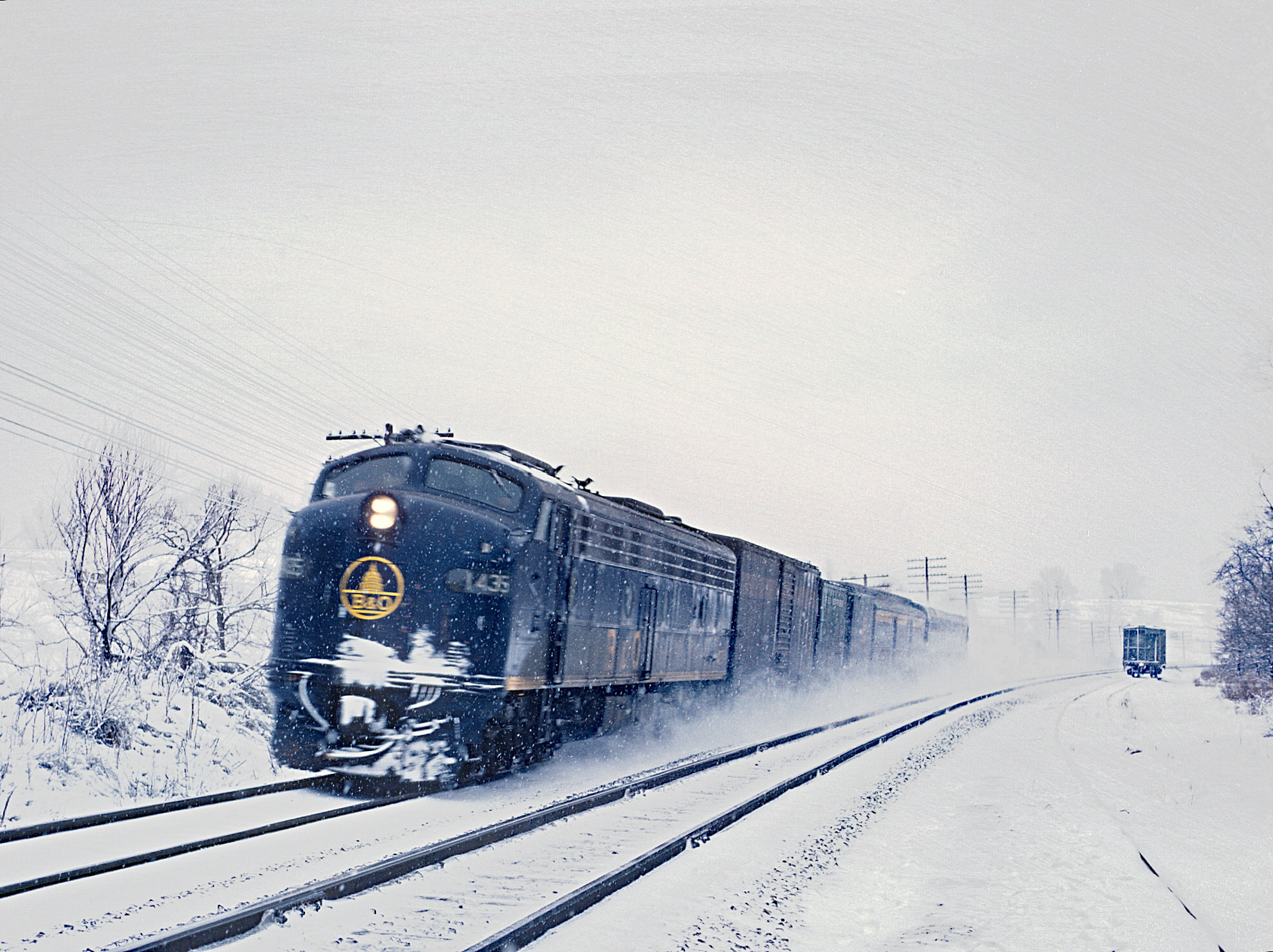 Baltimore & Ohio E8A #1435 dashes through the snow near Germantown, Maryland with train #11, the "Metropolitan," on March 2, 1969. Roger Puta photo.
Baltimore & Ohio E8A #1435 dashes through the snow near Germantown, Maryland with train #11, the "Metropolitan," on March 2, 1969. Roger Puta photo.As the Baltimore & Ohio began reducing its fleet in the postwar yeras the Special would occasionally receive updated (sometimes even lightweight) equipment.
This was particularly true after April of 1958 when the B&O ended all trains north of Baltimore, ceding the New York market to competitor Pennsylvania. The result of this move freed up some lightweight equipment and gave the Special a 14-4 sleeper between Cincinnati and St. Louis.
By then the full dining services had been dropped in favor of a lunch-counter coach, café club car, or parlor-diner along with a reclining seat coach. Additionally, the train continued to carry considerable mail and express throughout the 1960s allowing the Special, ironically, to hold the status of one of the B&O's most profitable runs.
Timetable (1952)
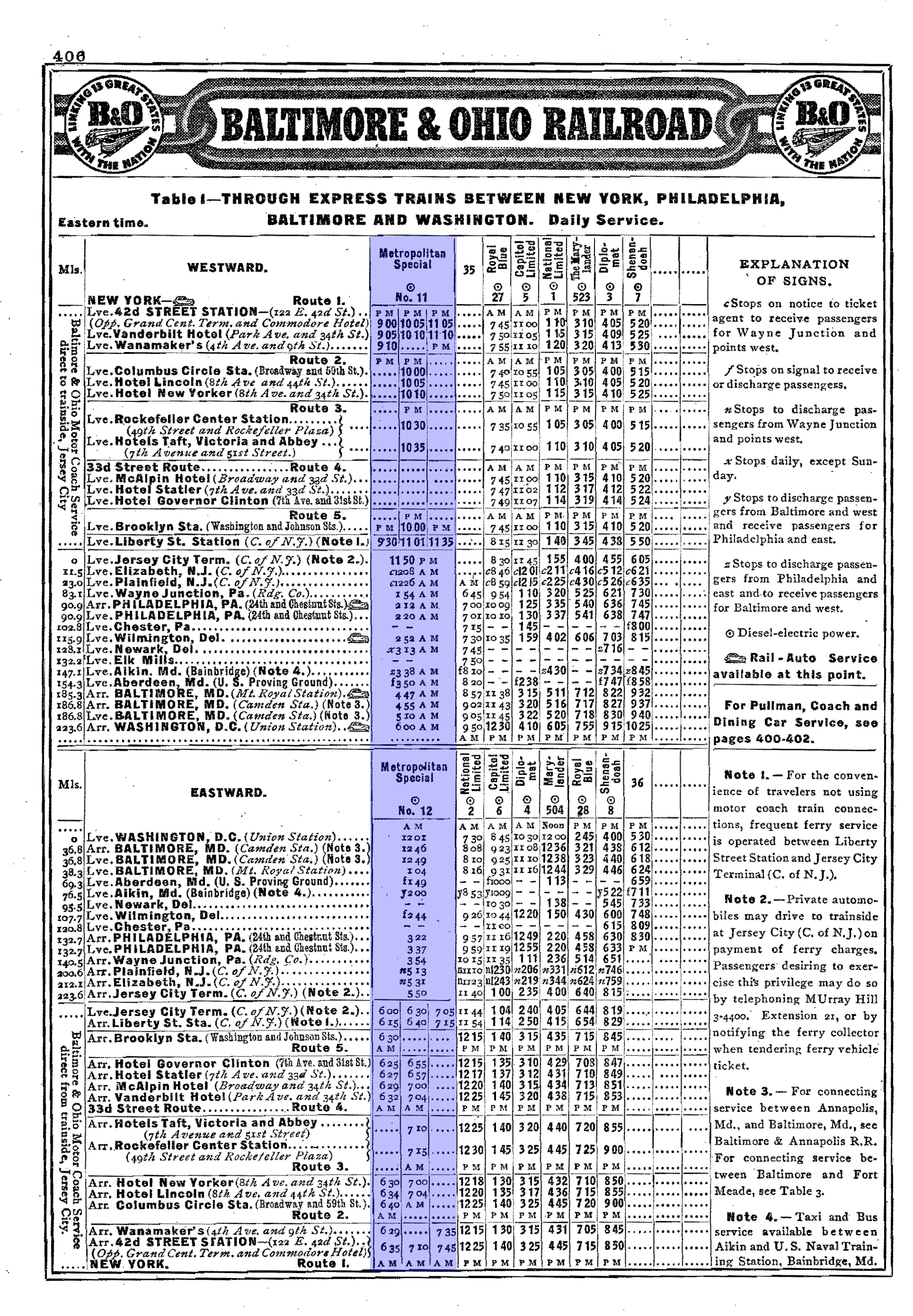
Unfortunately, by then the railroad was severely reducing its passenger services from which the Metropolitan was not immune. During April of 1964 the train lost its food services and, for a short time, its name although the former was brought back on an occasional basis in 1968.
After September of 1967 when all of the lucrative U.S. mail contracts were canceled it was only a matter of time until railroads adjusted accordingly and further reduced their fleets.
While this was true for the B&O, surprisingly the railroad held on to the Metropolitan along with the Cincinnatian (Cincinnati-Detroit) and its flagship, the Capitol Limited. Interestingly, the Special even survived more notable names like the National Limited, Columbian, and Ambassador.
Timetable (October 26, 1969)
| Read Down Time/Leave (Train #11/Metropolitan) | Milepost | Location | Read Up Time/Arrive (Train #12/Metropolitan) |
|---|---|---|---|
| 8:05 AM (Dp) | 0 | 10:35 PM (Dp) | |
| 8:19 AM | 7 | 10:11 PM | |
| 9:05 AM | 49 | 9:26 PM | |
| 9:17 AM | 55 | 9:15 PM | |
| 9:58 AM | 73 | 8:50 PM | |
| F 10:26 AM | 96 | ||
| F 10:55 AM | 122 | ||
| 11:30 AM (Ar) | 146 | 7:00 PM (Dp) | |
| 11:50 AM (Dp) | 146 | 6:50 PM (Ar) | |
| 12:24 PM | 169 | 6:13 PM | |
| F 12:32 PM | 174 | F 6:03 PM | |
| 1:24 PM | 200 | 5:17 PM | |
| 1:44 PM | 210 | 4:59 PM | |
| 2:08 PM | 222 | 4:29 PM | |
| F 2:21 PM | 228 | F 4:17 PM | |
| F 2:35 PM | 235 | F 4:02 PM | |
| 3:10 PM | 247 | 3:40 PM | |
| 3:50 PM (Ar) | 270 | 2:40 PM (Dp) | |
| 4:15 PM (Dp) | 270 | 2:20 PM (Ar) | |
| F 4:40 PM | 283 | F 1:58 PM | |
| F 5:02 PM | 297 | F 1:36 PM | |
| F 5:22 PM | 309 | F 1:16 PM | |
| 6:30 PM (Ar) | 351 | 12:08 PM (Dp) | |
| 7:00 PM (Dp) | 351 | 11:50 AM (Ar) | |
| 7:50 PM | 388 | 11:01 AM | |
| 8:26 PM | 419 | 10:15 AM | |
| 9:12 PM | 448 | 9:40 AM | |
| F 9:40 PM | 472 | F 9:04 AM | |
| 482 | F 8:52 AM | ||
| 490 | F 8:43 AM | ||
| 501 | F 8:32 AM | ||
| F 10:19 PM | 505 | F 8:27 AM | |
| F 10:36 PM | 521 | F 8:08 AM | |
| F 10:55 PM | 534 | F 7:50 AM | |
| 11:20 PM (Ar) | 544 | 7:30 AM (Dp) |
Final Years
After September 11, 1968 the B&O ended the Metropolitan west of Cincinnati (this was now served solely by the Chesapeake & Ohio's George Washington), ironically retained a Cincinnati-Washington routing that notoriously contained little traffic.
During the train's final few years, just prior to the start of Amtrak it normally carried only a few reclining-seat coaches. On-board food services were now completely gone but, according to the railroad's timetable such amenities:
"May be purchased at Cumberland, Grafton, Clarksburg (WV), or Parkersburg (WV) during station stops."
Until the end the B&O operated the train with clean equipment and a friendly staff. The Metropolitan's final day was April 30, 1971 and it was not retained following the start of Amtrak.
Sources
- Reynolds, Kirk and Oroszi, David. Baltimore & Ohio Railroad. Osceola: MBI Publishing, 2000.
- Schafer, Mike and Welsh, Joe. Streamliners, History of a Railroad Icon. St. Paul: MBI Publishing, 2003.
- Welsh, Joe. Baltimore & Ohio's Capitol Limited And National Limited. St. Paul: MBI Publishing, 2007.
Contents
Recent Articles
-
Nevada - Wine Tasting - Train Rides
Dec 28, 25 03:26 PM
While it may not be the first place that comes to mind when you think of wine, you can sip this delight by train in Nevada at the Nevada Northern Railway. -
New Hampshire - Wine Tasting - Train Rides
Dec 28, 25 03:22 PM
This article details New Hampshire's most enchanting wine tasting trains, where every sip is paired with breathtaking views and a touch of adventure. -
Virginia - Murder Mystery - Dinner Train Rides
Dec 28, 25 12:23 PM
Among the state's railroad attractions, murder mystery dinner trains stand out as a captivating fusion of theatrical entertainment, fine dining, and scenic travel.

